5 Things at Aichi Triennale 2016 (Besides “Echoes–Infinity”)
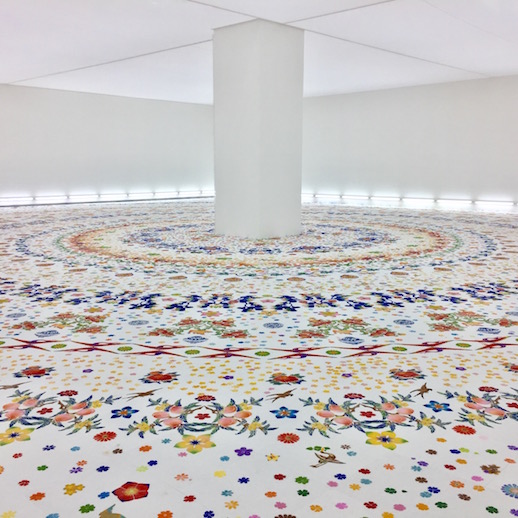
Shinji Omaki’s “Echoes–Infinity, Moment and Eternity” on the 10th floor of the Aichi Prefectural Museum of Art in Nagoya has been a crowning jewel of this year’s Aichi Triennale. Radiating out from the center of the room in colorful concentric rings, it features bird, flower, and fruit designs drawn from Japanese and international artistic traditions. Don’t worry, though, if you missed this mandala-like floor installation before the October 11th “X Day,” when visitors were officially invited to walk over its surface, scattering its sands into a rainbow blur. The festival offers plenty more gorgeous and captivating artworks spread out across its cities of Nagoya, Toyohashi, and Okazaki. Here are five favorites:
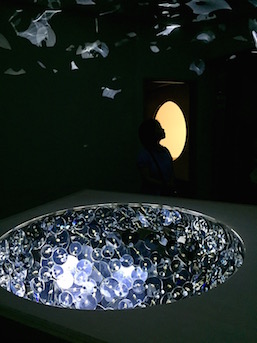
Tsuyoshi Hisakado
Stepping into Tsuyoshi Hisakado’s ticking, turning, glimmering installation is like entering a serene disco. Toward the back of the darkened room is a pedestal-mounted bowl lined with mirror clocks shining like a sparkly crater, reflecting their own image onto a ceiling festooned with the same timepieces. Meanwhile, a penlight circles the space, projecting a lunar circle of light orbiting this is strange, enchanting world where there is nothing but time that paradoxically seems to have stopped.
Where: 5th floor of the Kaihatsu Building in Toyohashi

Fumi Imamura
Fumi Imamura is a contemporary artist who uses encaustic wax painting, an ancient technique once applied to the coffins of mummies, to create glossy, crinkly floral works on paper. Her delicate creations resemble dried flowers pressed into the pages of a book, but on a wall-sized scale. These plants derive their charm not only from their branching, budding, insect-nibbled blossoms and leaves, but also from their poignantly rendered roots. Like the old textile district of Nagoya where they are displayed, Imamura’s works speak to the beauty of the cracked, the faded, and the lovingly preserved.
Where: Yagihyo Nishiki 6th Building in the Choja-machi area of Nagoya
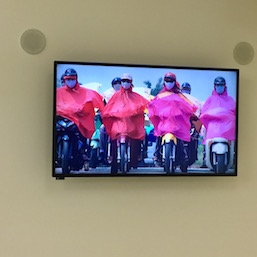
Uudam Tran Nguyen’s “Waltz of the Machine Equestrians”
This three-minute video of a motorcycle ballet is an audio-visual treat you’ll want to replay repeatedly, an urge Aichi Triennale indulges by showing it in all three cities. The Vietnamese artist presents a whimsical take on a well-known sight of his home country – scooter riders roaming urban streets – but this time in formation as all 28 masked riders proceed in brightly colored raincoats tethered to each other, moving with winking gravitas to the steady crescendo of the Russian composer Shostakovich’s Second Waltz. The grand finale of the film is cathartic with a tinge of wistfulness, our anonymous knights breaking loose from their plastic quilt and heading their separate ways into the unknown.
Where:
B2F of the Aichi Prefectural Museum of Art in Nagoya
The Meitetsu Higashi-Okazaki Station Building in Okazaki
Toyohashi Arts Theatre PLAT in Toyohashi
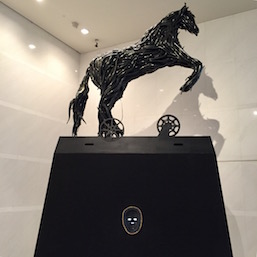
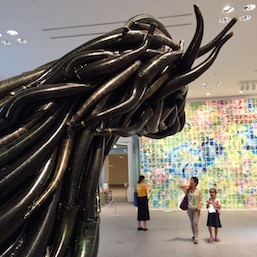
Kawayan De Guia’s “Trojan Horse”
The four sleek midnight bodies of the Filipino artist’s horse sculptures gleam with hundreds of sickle-shaped coils. Queasily reminiscent of the parasitic demon worms from Princess Mononoke, these coils made from the discarded film of 1980s movies are in fact torotot horns sold as a means of economic survival and blown at celebrations in the Philippines. De Guia’s spent years buying enough of them to build his tribute to The Four Horsemen of the Apocalypse.
De Guia’s life-sized beasts emit the occasional startling whinny and neigh, standing, galloping, and rearing up with cinema reels at their hooves. They are perched on pedestals indented in the shape of masks – assume their visages by peering into their eye holes and be deluged with images from the original torotot films, interspersed with recent news footage. “Trojan Horse” is remarkable for its powerful symbolism and cool stride through the past and the present, but perhaps most of all for its success in inverting the action of its namesake; it draws us into what we believe we are unsuspecting of rather than unleashing it upon us, a fate in which we are entirely complicit.
Where: 10th Floor of the Aichi Prefectural Museum of Art in Nagoya
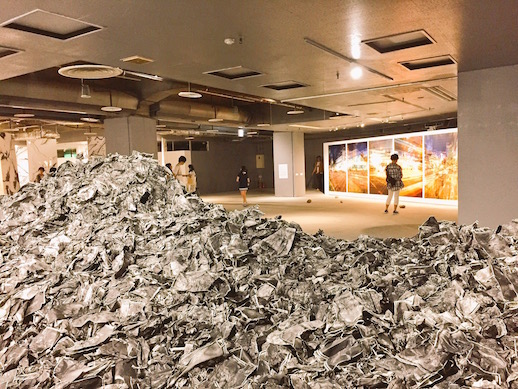
Head to the top floor of Cibico, a department store in Okazaki City that looks like it has seen better days, to catch several rising stars of the Japanese art world in “Trans-dimensional Photos: Images in the Future Tense,” a project exploring how images can shape shift into multidimensional forms. Representatives include Kohei Nawa, known for his taxidermied deer covered in pixelized glass bubbles, who displays a silvery Styrofoam piece of three interlinked muscular figures. Daisuke Yokota’s “Matter/Vomit” comments on how much “regurgitated” mass media we can stomach with a massive pile of images from the internet that he has printed out, torched, and then re-photographed. Zai Nomura shows off his experiments with explosives in the shattered glass cages he set them off in, accompanied by video of these pyrotechnics and the resulting black and white images of their sparks in photographs stirringly reminiscent of Zen paintings.
Where: Cibico at the Kosei Site in Okazaki
Tokyo Art Beat’s discount app MuPon offers ¥200 off Aichi Triennale tickets. You can see more photos from the festival on MuPon’s twitter account.



